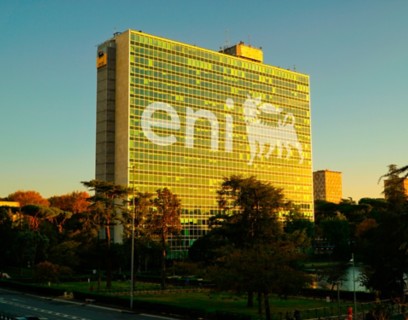Our sustainability reports
With our sustainability reporting we meet the requirements of the main international standards and guidelines.

Our reporting system
Mandatory reporting: the Sustainability Statement
Eni’s Sustainability Statement is part of the Group’s Annual Financial Report. This document, required by law, is prepared in accordance with Legislative Decree 125/2024, which transposes EU Directive 2022/2464 (Corporate Sustainability Reporting Directive – CSRD), and is subject to external assurance. The Sustainability Statement complies with the European Sustainability Reporting Standards (ESRS) and outlines Eni’s strategy, initiatives, and performance in relation to sustainability issues.
Voluntary reporting: Eni for and our local and thematic reports
Our approach to sustainability issues is also further explored through Eni for, the annual voluntary report, which describes how we contribute to the Just Transition, by sharing social and economic benefits with workers, suppliers, communities and customers, in an inclusive and transparent manner. Eni for, unlike the Sustainability Statement, delves into stories, tangible cases and first-hand accounts, always with the aim of generating long-term value for all stakeholders and with the objective of achieving the Sustainable Development Goals (SDGs), endorsed in the 2030 Agenda by UN member countries. In addition to the consolidated reports, local reports are published during the year, such as for the Ravenna and Gela sites and reports from the companies controlled by Eni.
Sustainability Documentation
Go to the documentation area and consult our reports year by year in the sustainability section.
Reporting standards and guidelines
Starting from 2024 the Sustainability Statement of Eni is prepared in accordance to the Legislative Decree No. 125/2024 and according to the European Sustainability Reporting Standards (ESRS), including the mandatory disclosures foreseen by the European Taxonomy Regulation. The Sustainability Statement is structured in line with the standard topics, divided in the 3 main areas: environmental, social and governance. In the Content index the following are detailed:
- disclosure of qualitative and quantitative information from other legislations
- entity specific indicators such as those foreseen by ESRS inspired to Oil & Gas sector standard of GRI and/or draft of EFRAG standard O&G sector or indicators linked to strategic targets
- disclosure of information contained in the Management Report
- potential use of phase-in.
Eni's materiality analysis
Eni's materiality analysis, that identifies the most relevant sustainability issues for Eni and its stakeholders, has been updated in line with ESRS standards in order to include the double materiality through:
- the identification of most significant impacts – positive and negative, actual and potential – generated by the organization on the environment and people, including human rights impacts- (so-called “impact materiality” or “inside-out” perspective)
- the identification of risks and opportunities arising from sustainability related topics that may significantly affect the company’s development, performance and financial position in the short, medium or long-term (so-called “financial materiality” or “outside-in” perspective).
For more details on materiality topics please refer to the chapter “Process and results of the double materiality assessment” in the Sustainability Statement.
Eni’s materiality process included the following phases:
- identification of the list of potentially relevant material topics related to Eni’s activities and its value chain, both upstream and downstream
- identification of impacts, risks and opportunities (IROs) associated with potentially relevant topics
- definition of the impacts, risks and opportunities (IROs) assessment model
- assessment of the significance of IROs
- engagement with targeted experts regarding the results of the impact materiality assessment following the internal evaluation; these meetings were held with experts
- definition of the list of relevant IROs and final calibration.
All data on our sustainability performance
Sustainable goals and principles reflected in clear and transparent data
Integrity and transparency are the values underpinning our transformation efforts, which we document with the utmost commitment.


















